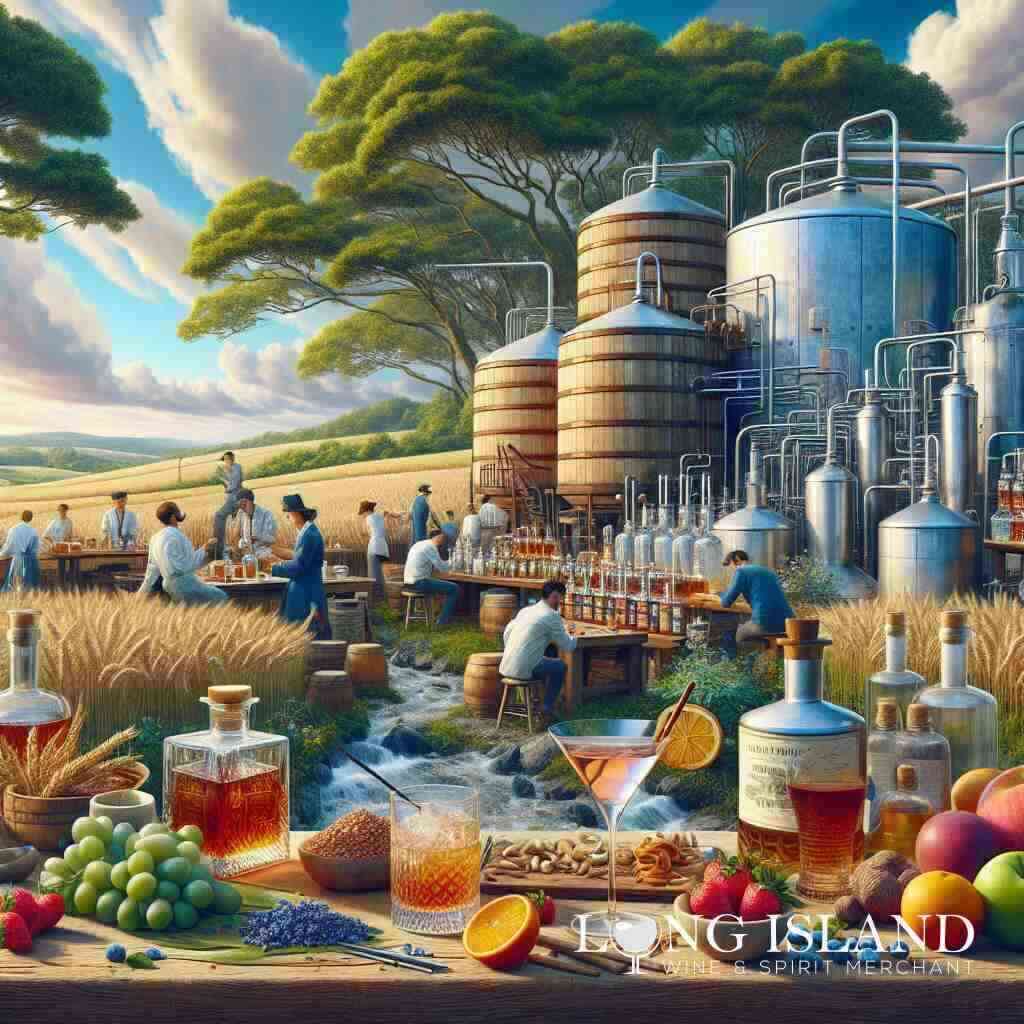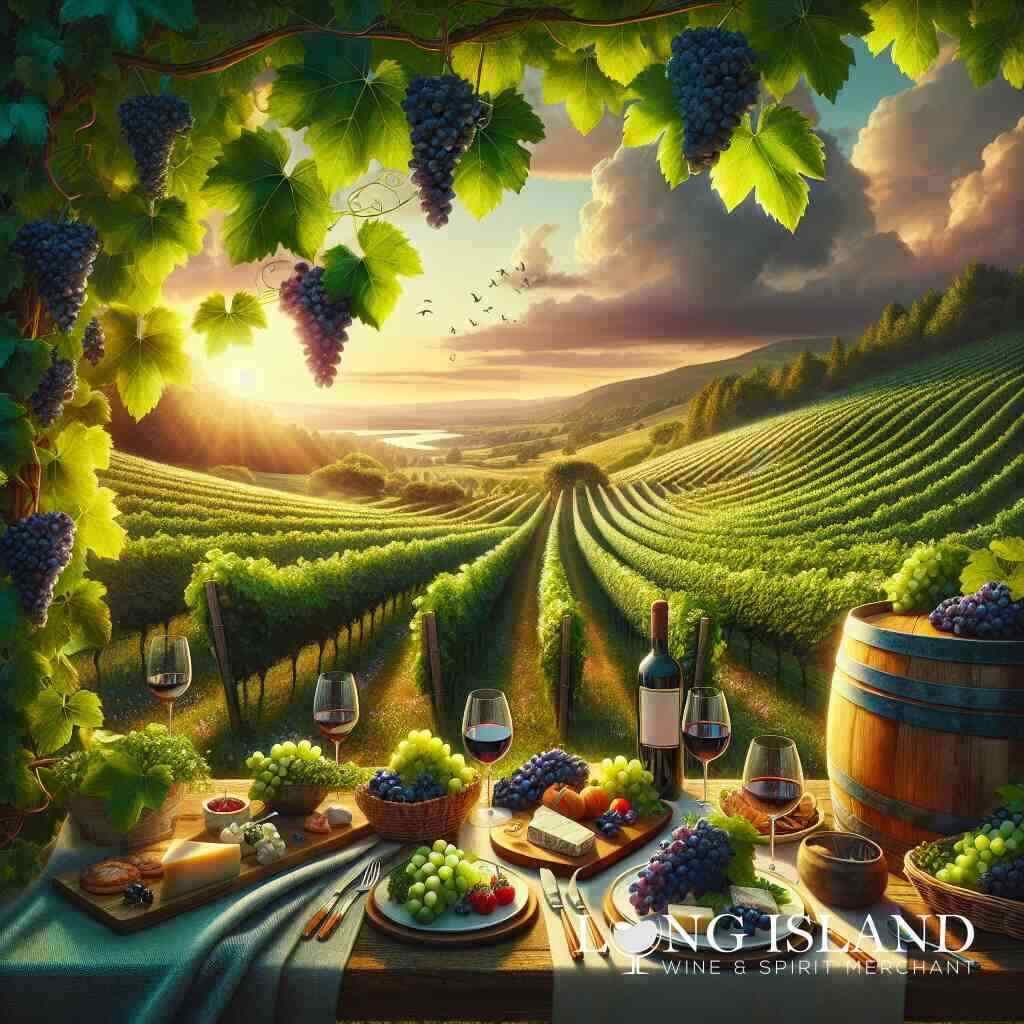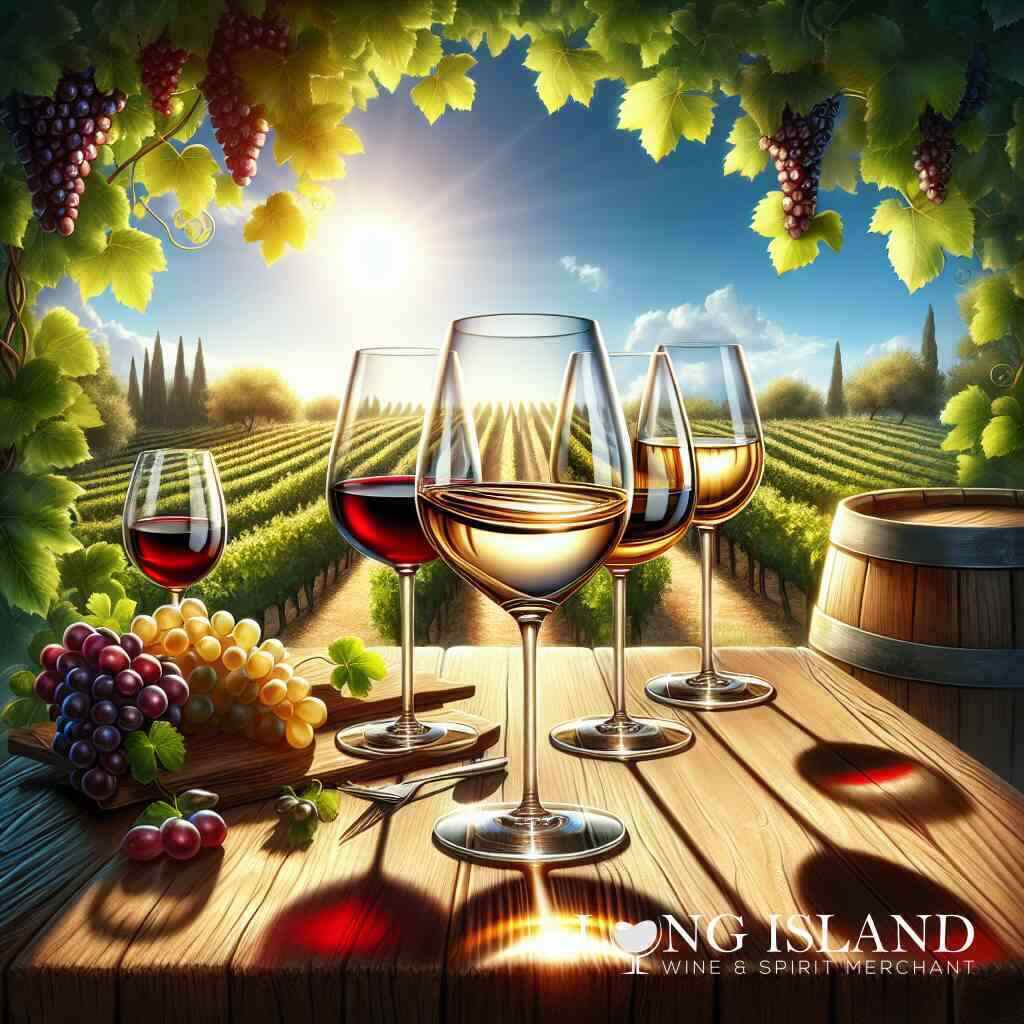
Refining Your Palate: The Difference Between Red and White
January 20, 2025
A Sip Into Discovery: Unveiling the Art of Wine Appreciation
The Intricacies of Red and White: An Overview
Wine is a mysterious and captivating alcoholic drink that has intrigued connoisseurs and beginners alike. At the heart of any wine journey is the distinction between red wine and white wine, each offering a unique spectrum of flavors and aromas. Understanding the nuances of each type starts with examining their color, achieved through the fermentation process and the grape skins’ contact time. Typically, red wines showcase bold tannins and robust flavors, while white wines are celebrated for their crispness and acidic balance.
Recognizing the differences doesn’t end with color. Dive into the physicochemical attributes like tannins and acidity, which influence the overall texture and palate experience. Additionally, the serving temperature can significantly affect your wine tasting, with reds generally served warmer than whites, further influencing the perception of each sip. Embracing these intricacies gives a refined appreciation, paving the way toward deeper wine enjoyment and expertise.
Exploring the Vineyard: From Terroir to Tasting Notes
Vineyards are the soul of wine production, where the unique set of environmental factors- shapes the character and flavor profile of each bottle. Soil composition, climate, and topography interplay to define each varietal’s potential, leading to a diverse-tasting landscape. This dynamic allows for variations within familiar labels, offering an adventure with every bottle opened. Delving into these elements illuminates the journey from vineyard to glass, enriching the tasting experience with newfound insights.
Honing your focus on tasting notes reveals layers of complexity in wine. Notes of fruit, earth, spices, and herbs converge in a fragrant bouquet, narrating the tale of its origins. Attuning your palate to such details elevates tasting from mere consumption to a sensory expedition. With each sip, the discovery of subtle nuances in flavor and aroma enhances your appreciation, bridging the gap between knowledge and indulgence-essential for every wine enthusiast.
Understanding Your Wine Glass: Shapes and Sizes in Wine Tasting
The sophistication of wine tasting extends to the choice of wine glasses, where shape and size remarkably influence the tasting experience. Different glasses are designed to highlight specific wine attributes, enhancing aroma and taste. For example, a traditional red wine glass with a larger bowl allows for better aeration, softening tannins, and amplifying aromas. In contrast, a white wine glass with a smaller bowl helps maintain a cooler, more appropriate temperature, preserving its crisp and refreshing qualities.
Selecting the correct glass not only complements the wine but also honors its characteristics. Such thoughtful pairing emphasizes the emergence of aromas and flavors, transforming mere drinking into a multifaceted experience. Furthermore, exploring the nuances of glassware signifies a deeper dive into wine culture, encouraging attention to every detail-from the clink of glasses to the final savoring swallow. Whether indulging alone or with a crowd, prioritize understanding and selecting the right glass to elevate every moment with wine.
The Red Brigade: Bold Tannins and Rich Aromas
Unpacking the Structure: Tannins and Wine Body
Red wines are renowned for their robust structure, primarily attributed to tannins. These polyphenolic compounds lend red wines their characteristic astringency and play a crucial role in the wine’s aging potential. Tannins interact with proteins in your saliva, creating a drying sensation that enhances the wine-tasting experience. Additionally, the wine body ranging from light to full-bodied-echoes the wine’s viscosity and depth of flavor, influenced by factors like grape variety, fermentation, and aging. Understanding tannins and the wine body is essential for appreciating the complexity and texture that red wine brings to the palate.
Exploring the multitude of red wine varietals and styles can further unlock insights into how tannin levels differ among grapes. In Burgundy, Pinot Noir offers a light-bodied, delicate expression with softer tannins. In contrast, a bold Cabernet Sauvignon from Napa Valley showcases a full-bodied wine with structured tannins, illustrating the diverse spectrum red wine embodies.
Barrels of Flavor: The Magic of Oak Aging
The art of oak aging in red wine production is akin to a masterful finishing touch, imbuing wine with nuanced flavors and aromas. Oak barrels allow for micro-oxygenation, which softens tannins and enhances the wine’s aromatic complexity. This process can introduce notes of vanilla, spice, and toast, adding layers to the wine’s profile. The choice of American, French, or Hungarian oak and the extent of the aging period greatly influence the final product.
Through oak aging, wines develop a harmonious blend of flavors that elevate their richness. For instance, a Merlot aged in American oak may exude a bolder vanilla aroma compared to one matured in French oak, which often emphasizes subtler spice notes. This elemental phase in winemaking highlights the intricate balance between nature and nurture, showcasing wine’s potential to transform with time and care.
Old World vs New World Reds: A Tapestry of Styles
The distinction between Old World and New World red wines is a fascinating exploration of cultural and geographical influences in winemaking. Old World wines, produced in European regions like France, Italy, and Spain, typically focus on tradition, terroir, and subtlety. These wines often feature lower alcohol content and higher acidity, contributing to their elegance and sophistication.
In contrast, New World wines from regions such as California, Australia, and South Africa often embrace bolder flavors with fruit-forward profiles and a richer, more robust body. Understanding these stylistic differences allows enthusiasts to appreciate the diverse tapestry that red wine offers and can guide them in shopping for premium wines that align with their personal preferences.
Selecting the Perfect Red: Wine Pairing Essentials
Mastering the art of red wine pairing is essential to unlocking its full potential at the dining table. Tannic reds such as Cabernet Sauvignon pair excellently with fatty cuts of meat, as the tannins help to cleanse the palate, complementing the dish magnificently. Conversely, a light-bodied red like Pinot Noir may pair seamlessly with roasted chicken or mushroom-based dishes, where its acidity and modest tannins enhance the meal without overpowering it.
Diving into the wine pairing essentials can transform an ordinary meal into an extraordinary experience, guiding your taste bud journey with finesse. By aligning wine’s intrinsic qualities with the flavors and textures of food, this pairing principle showcases how thoughtful selection can elevate both the wine and cuisine to new culinary heights.
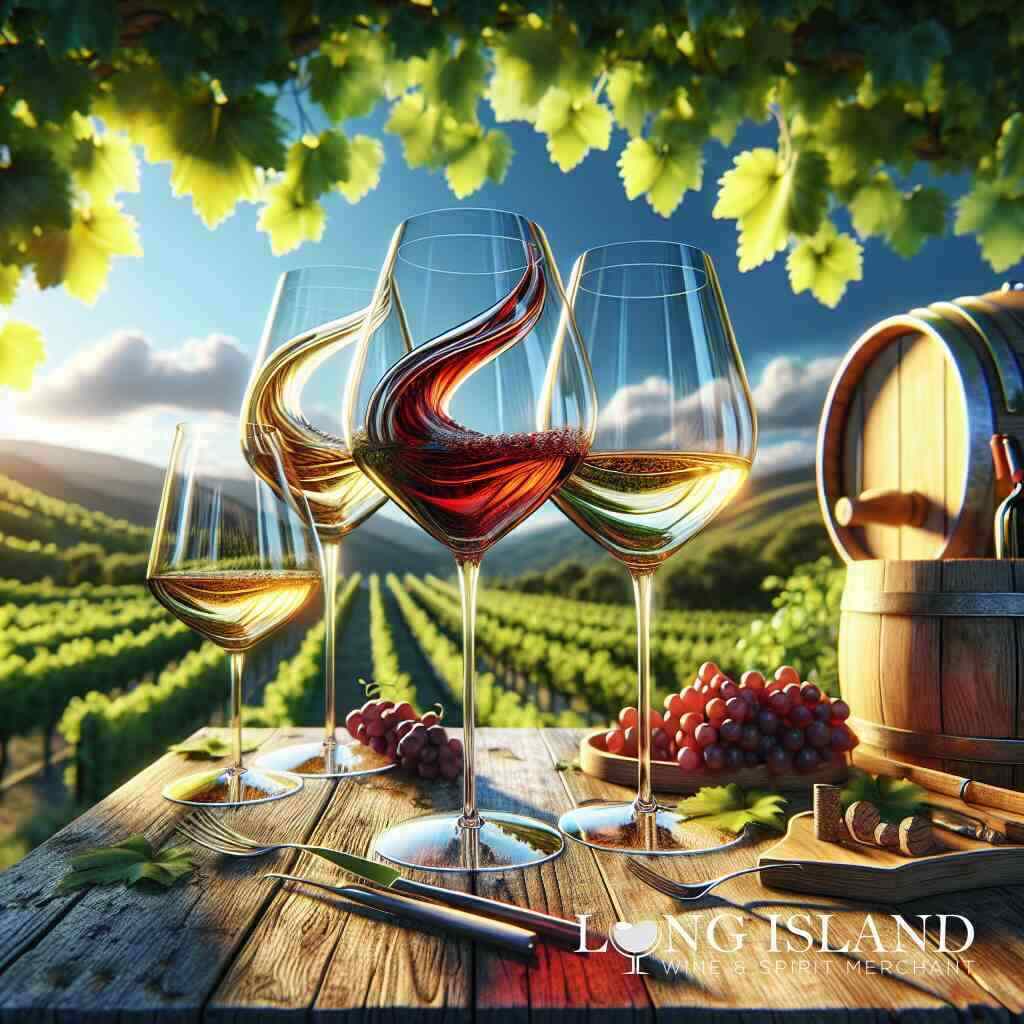
Whites Unveiled: Graceful Elegance and Crisp Acidity
A Dance of Acidity and Balance: The Wine’s Essence
White wine dances gracefully across the palate, offering a refreshing symphony of acidity and balance that brings its essence to life. This timeless wine is characterized by its vibrant acidity, a crucial element that defines the drink’s crisp, refreshing nature and its ability to age gracefully. Unlike red wine, which is dominated by tannins, white wine uses acidity to enhance its flavors, making it both zesty and lively. The interplay between acidity and balance not only complements the wine’s taste but also prepares it to pair exquisitely with a variety of culinary creations.
Understanding the precise balance between acidity and fruitiness is essential for appreciating white wine’s full potential. This balance creates a versatile profile suitable for diverse occasions, from casual gatherings to gourmet dinners. As you explore the vast world of white wines, you’ll discover that each varietal offers a unique balance, allowing for a personalized wine-tasting experience that adapts to individual tastes and preferences.
The Subtle Influence of Fermentation Techniques
The art of Fermentation in winemaking plays a pivotal role in shaping the profiles of white wines. This intricate process not only influences the flavor but also the texture and aromatic qualities that define each bottle’s character. Various fermentation techniques can lead to a spectrum of styles, from the clean, crisp notes of stainless steel fermentation to the round, creamy textures imparted by oak barrel aging.
Mastering these techniques allows winemakers to craft distinctive wines that resonate with specific gustatory genres, emphasizing either the natural fruit flavors or the enriched complexities from chemical transformations during fermentation. Temperature control during fermentation is also crucial, particularly for white wines, as cooler temperatures help preserve delicate aromas and maintain bright acidity. This careful manipulation of the fermentation process is essential for producing high-quality white wines that captivate and delight.
Distinguishing Varietals: Sauvignon Blanc to Chardonnay
White wine varietals present a diverse array, each with its own set of characteristics ranging from the vibrant and often herbaceous notes of Sauvignon Blanc to the nuanced, buttery essence of Chardonnay. Understanding these varieties is an exploration of taste profiles that cater to distinct preferences and occasions. Sauvignon Blanc, for example, is celebrated for its tangy acidity and pronounced aromas of citrus and freshly cut grass, making it a quintessential choice for summer sipping.
In contrast, Chardonnay offers a versatile experience, with styles varying widely depending on the winemaking approach. When aged in oak, Chardonnay boasts rich notes of vanilla and butter, while an unoaked version tends to preserve the grape’s innate fruitiness and minerality. Exploring these varieties equips wine enthusiasts with the knowledge to navigate and appreciate the extensive world of white wines, effectively tailoring selections to suit specific desires or meal pairings.
Perfecting the Pairing: Culinary Adventures with White Wine
The art of wine pairing art with white wine opens the door to a plethora of culinary adventures. White wines are celebrated for their versatility at the dining table, effortlessly complementing dishes ranging from light salads and seafood to rich, creamy pasta. Their acidity cuts through brightness when paired with slightly fatty dishes, enhancing the overall dining experience.
For each varietal, there’s an ideal pairing that accentuates its inherent attributes. A high-acid Sauvignon Blanc pairs wonderfully with goat cheese and herb-infused appetizers, while a rich, oak-aged Chardonnay can elevate roasted chicken or lobster dishes. Delving into the intricacies of white wine pairing not only enhances the flavors of the meal but also heightens the enjoyment of the wine itself, making each dining experience distinctive and unforgettable.
The Sensory Expedition: Mastering Wine Tasting Techniques
Visual Appeal: Analyzing Wine Legs and Color Depth
Wine tasting is a sensory journey that begins with visual inspection. The wine’s color and clarity can offer insightful clues about its age and quality. Holding your wine glass at an angle allows you to appreciate the color depth, ranging from deep ruby reds to light straw yellows. Notably, the presence of “wine legs” or “tears”-the droplets forming on the glass-can indicate alcohol content and sugar levels. Observing these visual cues enriches your understanding and adds a layer of sophistication to your wine appreciation.
Understanding these visual markers not only elevates your wine experience but also reflects the meticulous craft behind each bottle. Explore The Art of Discovering Hidden Wine Gems. When exploring Long Island liquor store inventory, appreciating these visual components might guide you in selecting your next extraordinary glass.
Bouquet and Aroma: Sensory Exploration of Wine Fragrance
The bouquet or aroma of wine is a captivating exploration of fragrances, revealing a tapestry of scents that tell a story of origin and terroir. Swirling the wine in your glass activates these aromas, enhancing your sensory experience. In-depth aroma assessments can reveal layers such as fruity, floral, earthy, and spicy notes. Recognizing these characteristics not only amplifies enjoyment but informs your palate regarding possible varietal and vintage elements, which are crucial for both red and white wines.
Engaging in these olfactory exercises connects you further to the artistry of winemaking. For those looking to refine their skills, resources like wine tasting with Long Island experts can provide personalized guidance on mastering the nuances of wine fragrance.
Decanting Artistry: Enhancing the Wine’s Nuance
Decanting is a centuries-old practice that can significantly enhance a wine’s characteristic profile by allowing exposure to air. This technique is primarily used for red wines, which benefit from aeration to soften tannins and develop intricate flavors. Pouring wine slowly into a decanter separates sediment and allows oxygen to interact, bringing out depths of aroma and taste previously hidden. The transformative process of decanting turns ordinary sipping into an elevated experience that reflects a dedication to perfect wine enjoyment.
To enrich your decanting skills, consider expert insights from wine enthusiasts familiar with regional styles and practices on Long Island. Accessing knowledge from platforms dedicated to wine aging insights can help deepen your understanding of this revered practice.
Savoring the Finish: The Aftertaste and Texture Evaluation
The finish of a wine, known as the aftertaste, is a final homage to its complexity and the winemaker’s craft. A wine’s finish is evaluated by its length (how long flavors linger) and texture (the tactile feel on the palate). Rich, full-bodied reds might offer a lingering warmth, whereas crisp whites often leave a clean, refreshing trail. These lingering notes are vital for discerning quality and character, usually the hallmark of a great wine.
Savor this final step by immersing yourself in expert-led sessions. Exploring local wine sensory evaluation tips can amplify your tasting experience, ensuring every bottle enjoyed is a masterpiece savored to the last drop.
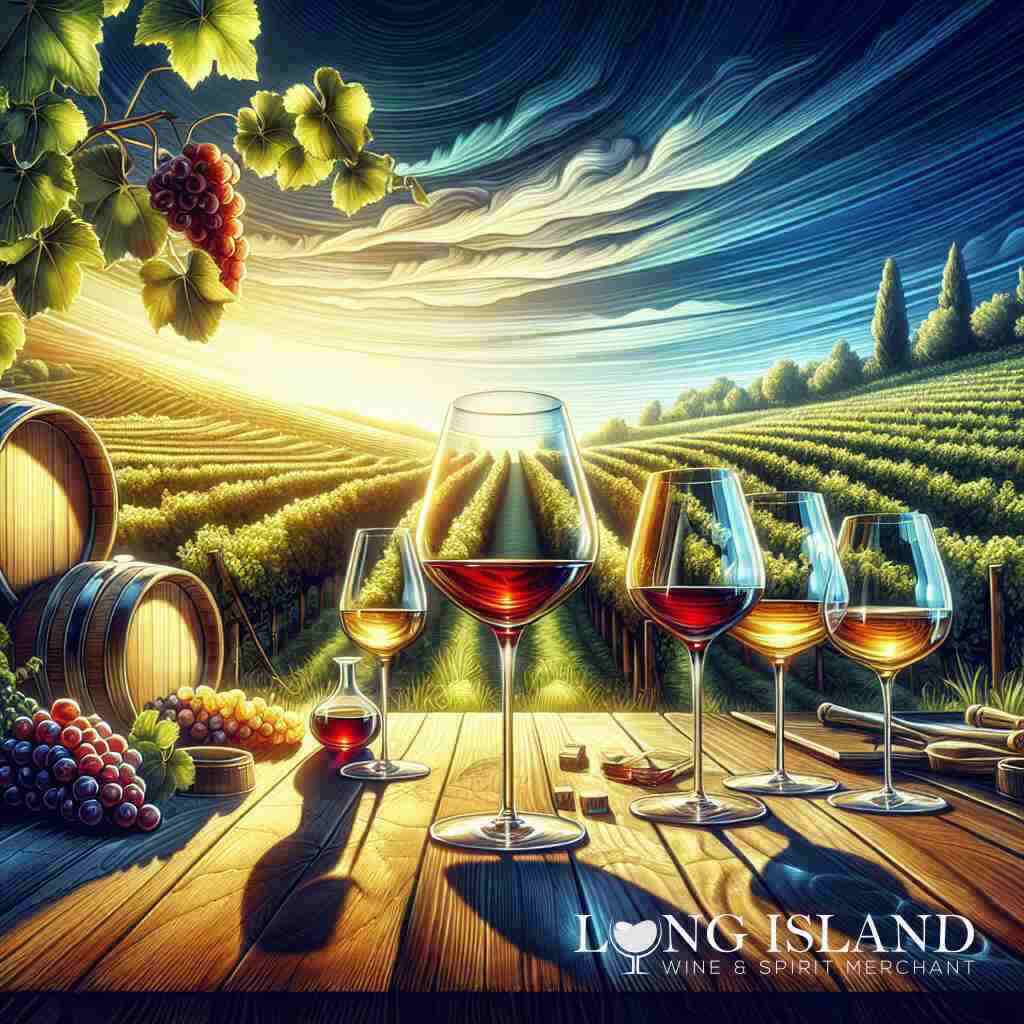
Concluding Thoughts: Embrace the Journey of Palate Refinement
Embracing the Evolution: Continually Expanding Your Palate
Wine appreciation is not a static journey; instead, it’s an ever-evolving exploration that refreshes your senses with each new experience. As you delve deeper into the distinctions between red and white wines, embrace the opportunity to expand your palate continually. Whether by experimenting with different varietals or refining your tasting techniques, every sip molds your understanding of fine wine. Engage with diverse flavors and aromas, savoring the intricate nuances that each bottle presents. This practice not only enhances your enjoyment but also fosters a richer connection to the cultural tapestry that defines wine as an art form.
Embarking on this evolution means welcoming challenges and discoveries. Each tasting offers a chance to broaden your horizons, paving the way for a sophisticated, knowledgeable journey that transforms mere indulgence into a lifelong passion.
Indulge and Explore: Empowered Wine Selection
Empowering yourself in wine selection starts with a keen understanding of what you enjoy. By leveraging tools like a guide to white wine experiences, you can explore a diverse range of wines, discovering preferences that align with your palate. Whether it’s the zesty freshness of Sauvignon Blanc or the lush depth of a vintage Chardonnay, the vast world of wine invites you to indulge and explore.
The empowering process of wine selection involves combining personal preferences with informed choices, ensuring each selection brings maximum satisfaction. By tapping into knowledge and experimenting with pairings, you craft memorable dining experiences that showcase the harmony between wine and cuisine. This empowerment transforms the wine-buying process into a personalized adventure, enriching each encounter.
Engaging with Experts: A Collaboration with Long Island Wine & Spirit Merchant
Collaborating with experts can amplify your wine journey, offering access to specialized insights and curated selections that expertly match your evolving preferences. At Long Island Wine & Spirit Merchant, we strive to guide and support your exploration of wine, connecting you with regional insights and celebrated varieties.
Our collaboration focuses on empowering your tasting experiences through expertly recommended selections and engaging wine tastings that resonate with your palate. Learn more from Master the Art of Wine Tasting Events Near Long Island. Whether you seek advice on crafting a custom case of wine or wish to participate in local tasting events, our team is ready to assist. The rich tapestry of Long Island’s wine culture is at your fingertips, inviting you to engage, indulge, and refine your appreciation with every glass.
Partnering with seasoned professionals heightens your enjoyment while promoting a deeper appreciation for the heritage and innovation that define today’s vibrant wine landscape.
Frequently Asked Questions
Question: How can understanding tannins and wine bodies enhance my wine-tasting experience?
Answer: Understanding tannins and the wine body is essential for a more profound wine-tasting experience. Tannins, mainly found in red wines, give a wine its structure and complexity, influencing its aging potential. Recognizing the wine body helps determine the wine’s viscosity and flavor depth, from light and delicate to rich and full-bodied. At Long Island Wine & Spirit Merchant, we offer a variety of red wine options, each with unique tannin levels and body, allowing you to find the perfect match for your palate. Visit our Long Island liquor store or explore our selection online to experience the science of tannins and wine bodies firsthand.
Question: What role does fermentation play in distinguishing the flavor profiles of different white wines?
Answer: Fermentation is a crucial process in winemaking that impacts the flavor, texture, and aromatic qualities of white wines. Check out Understanding Chardonnay’s Nuances at Our Store. The choice between stainless steel fermentation and oak aging, for example, can lead to vastly different styles-from crisp and clean to rich and creamy. Long Island Wine & Spirit Merchant offers an array of white wine varietals, including Sauvignon Blanc and Chardonnay, each reflecting unique fermentation techniques. Our knowledgeable team can guide you in selecting a white wine that suits your taste, whether you prefer the zesty freshness of a young Sauvignon Blanc or the buttery richness of an oak-aged Chardonnay.
Question: How does Long Island Wine & Spirit Merchant recommend pairing red wines with food?
Answer: Pairing red wines with food involves understanding how flavors can complement each other to elevate both the wine and the dish. See more on Master Wine Tasting Etiquette with Long Island Wine & Spirit Merchant. For instance, a tannic Cabernet Sauvignon pairs beautifully with fatty cuts of meat, as the tannins cleanse the palate. A light-bodied Pinot Noir is perfect with roasted chicken or earthy mushroom dishes. At Long Island Wine & Spirit Merchant, we offer a wide selection of fine wines ideal for pairing with various cuisines, ensuring each dining experience is distinctive and unforgettable. Our team is eager to provide personalized food and wine pairing recommendations to suit any occasion.
Question: In “Refining Your Palate: The Difference Between Red and White,” what insights are offered to enhance wine-glass selection?
Answer: In “Refining Your Palate: The Difference Between Red and White,” we highlight that wine-glass shape and size can significantly influence your tasting experience. The design of a glass can enhance specific wine attributes, maximizing aroma and flavor. For reds, large glasses allow for aeration and softening tannins, whereas smaller glasses for whites preserve their crispness. At Long Island Wine & Spirit Merchant, we encourage you to explore our collection of wine glasses to ensure your choice honors the wine’s characteristics, transforming every sip into a multifaceted experience.
Question: How does Long Island Wine & Spirit Merchant support individuals looking to refine their wine palate and understanding?
Answer: Long Island Wine & Spirit Merchant is committed to helping customers refine their wine palate and deepen their understanding of wine through expert guidance and curated selections. We offer a diverse inventory of wines from both old-world and new-world wineries, educational resources like wine taste quizzes, and personalized recommendations based on individual preferences. Our knowledgeable team is available to provide insight into wine pairings, varietal distinctions, and tasting techniques, ensuring that your wine journey is both enjoyable and enlightening. Discover tips on How to Cultivate Your Wine-Tasting Palate.


